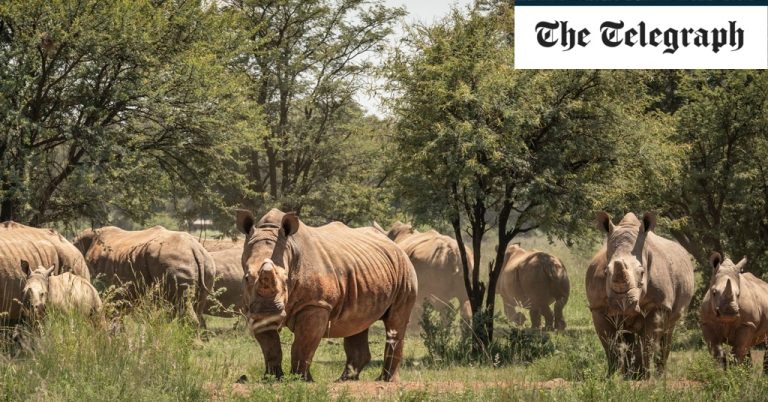Some 12,000 rhinos are estimated to have been killed in the past decade.
Four-fifths of those remaining are in South Africa, with smaller populations in Kenya, Uganda, Namibia, Zambia, Rwanda and the Democratic Republic of Congo.
African Parks estimates that to secure the future of the species, it needs to build somewhere between seven and 20 self-sustaining populations across the entire continent.
The farm’s rhinos will be used to either top up and reinforce existing populations, or in some cases be used as the foundation for whole new populations in areas where rhinos have been wiped out.
There are currently around 2,000 rhinos on the farm, but with more being born all the time, it’s hoped that up to 3,000 of the animals will be put back into the wild once the project draws to a close in a decade.
“It’s a really unique story in conservation in Africa today and just so much potential, so much hope,” says Jean Labuschagne, director of conservation development at African Parks.
“I think it’s obviously enormously challenging and none of us are blind to that, but it’s an opportunity that isn’t easily going to come around again.
“This is a strategic rewilding initiative. We want to basically try and de-risk the species.”
